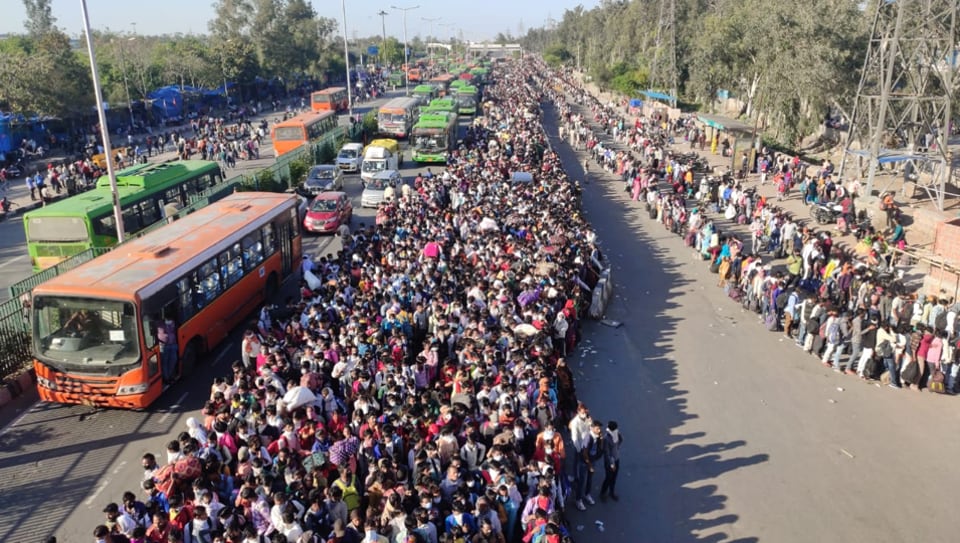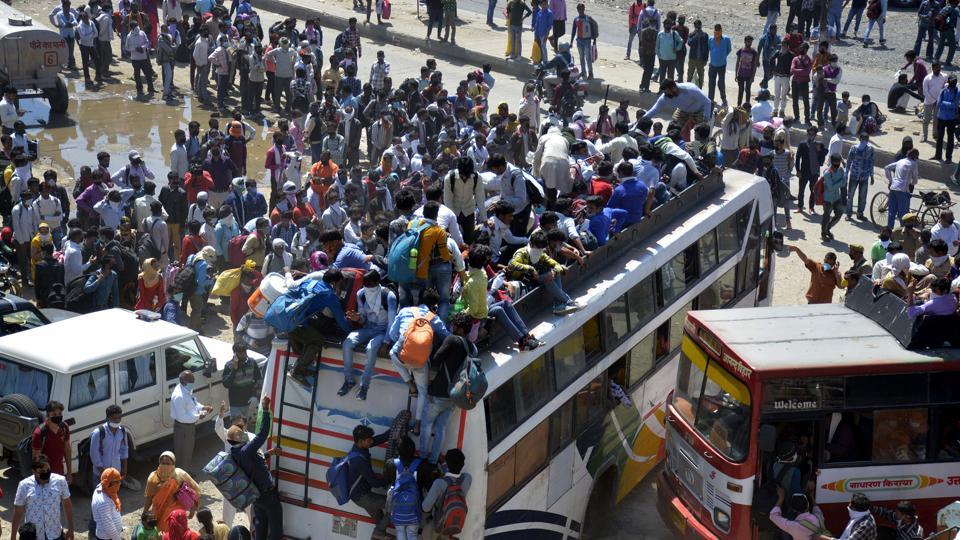prasad1
Active member

The movement of migrant workers began on March 24, when PM Modi announced a countrywide lockdown. (HT Photo)
There are two realities in India today as we fight the Coronavirus pandemic...
One is the reality of you and me, sitting in the comforts of our respective homes. Some, like me, are already frustrated with the enforced work from home discipline. Others are simply bored minus the comfort of their social life, the nagging need to be seen, and make interesting Instagram stories to impress their friend circle with.
But the other stark and terrifying reality is of the thousands of workers who are trudging the long way back home in these difficult times.
The movement of migrant workers began on March 24 itself when PM Modi announced a countrywide lockdown. But this being the first weekend of India’s 21-day lockdown, migrant workers in Delhi decided to head to various home destinations like Lucknow, Bareilly, Meerut, Badaun, Aligarh, Gorakhpur and nearby towns.
With trains and buses not working, many were seen carrying children on their shoulders and their backs. Some had even resigned themselves to 600 kilometre long walks back home. Many of them without money, food or water...
This was despite repeated assurances from central and state governments that their needs will be taken care of. Needless to say that the governments should have anticipated for and been better prepared for such an exodus. They have now swung into action. Police personnel and civil society groups can be seen distributing food, water and medicines – all along the highway. In particular, the UP government has organised more than a thousand buses to take these migrants home.
But the availability of these buses now has led to another problem. Pictures from Delhi’s ISBT on Saturday were heart-wrenching and scary. Migrant workers could be seen lined up in long snaky queues, huddled close together. Social distancing was certainly out of the window in the face of these unusual circumstances – putting many of these workers at risk of getting infected.

Covid-19 lockdown: Why India must fear migrant exodus from cities
On March 24, India was put under a lockdown after an announcement made by Prime Minister Narendra Modi.




